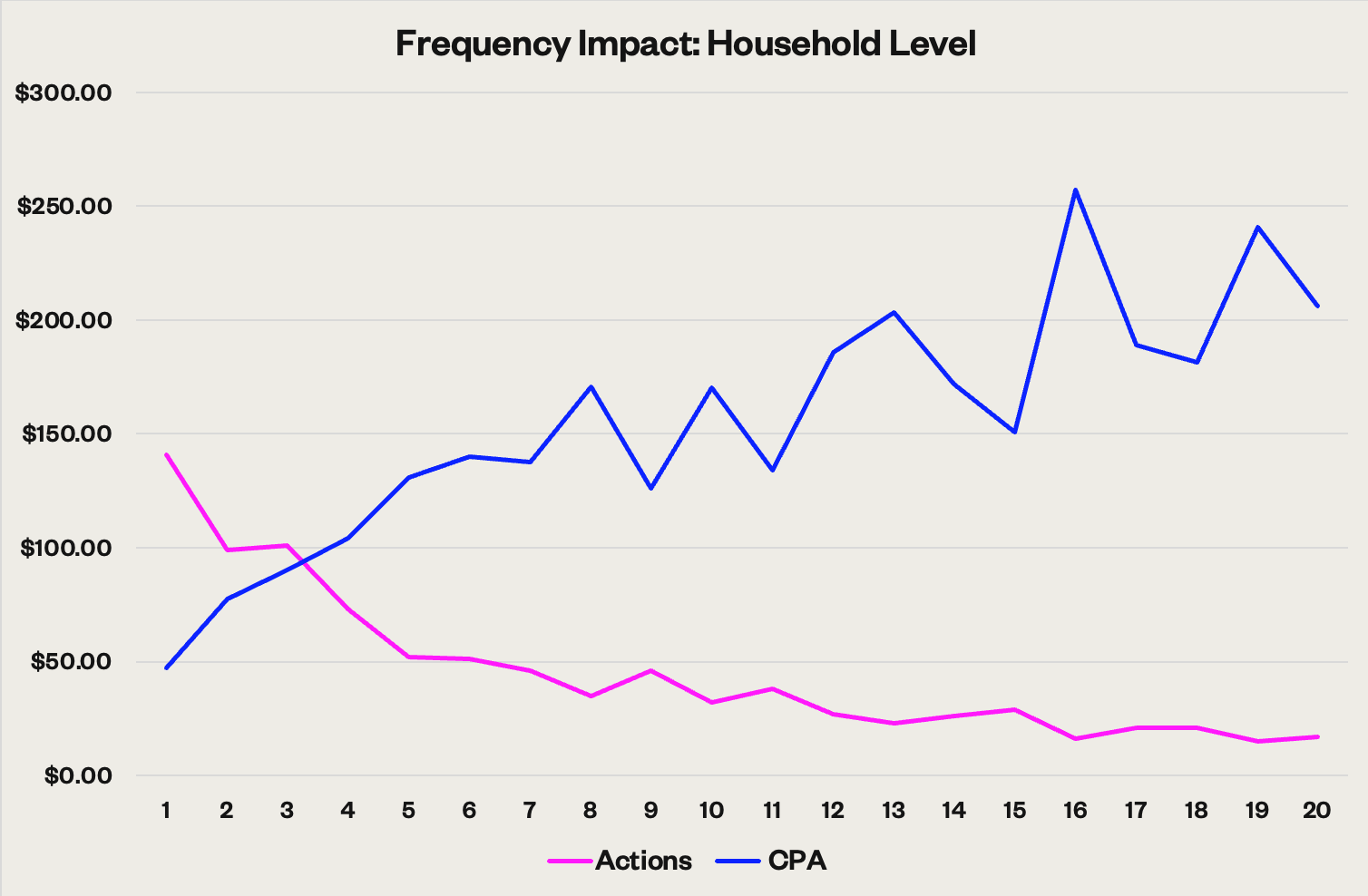When planning successful OTT advertising campaigns, we’re often asked by clients if high ad frequency causes creative fatigue on platforms like Hulu.
While the average OTT frequency is about 3x per day or lower (which is much lower than other media channels, like linear TV, which can often hit as high as 10-15x per day), the ad frequency rate that works best for each client is highly dependent on KPIs and campaign goals. Individual factors such as goals, budget, desired reach, and the length of the advertising campaign all play into the ideal frequency rate for your campaign, and the best approach is to test and optimize until we find the frequency rate that meets campaign goals.
For example, I looked at a few months of campaign data for one of our clients in the home healthcare industry to evaluate the impact of frequency rate on conversions. I found that, for this client and particular campaign, almost 50% of conversions happen with a frequency of 1-4x (which is considered low, in my opinion). But, we need to take the client’s goals into consideration before determining whether to cap the frequency rate at 4.

This specific client’s goal was to get a consumer to convert, but also to continue to use the service/website (brand awareness). So, in a case like this, we are happy to see people are still converting with frequency 4+, since we are okay with higher frequency and keeping our brand in front of our audience even after a conversion. So in this case, we would not cap the frequency rate at 4.
However, if this were a campaign where conversions were the primary goal and brand awareness was not a goal, we would have capped frequency around that 1-4 mark, after a conversion happens and a person is no longer likely to convert again, to maintain that lower CPA and lessen wasted impressions.
Creative variations for increased frequency campaigns
While some brands want to keep the frequency low, it isn’t uncommon to want to increase the frequency rate, especially for a performance campaign, but this can be done in a way that reduces ad fatigue. An easy way to boost your frequency is by retargeting with more OTT ads. A common misconception is that “OTT retargeting” is just a lot of banner and native ads. While this is a common practice, it’s not the only option. You can retarget already-exposed OTT viewers with another OTT creative variation, and/or more personalized creative, depending on the campaign goal.
Related article: The impact of first-party data to improve connected TV advertising results
When looking at frequency, it’s also important to look at household-level and device-level frequency. This allows us to further optimize based on device types so that you’re not over-exposing someone on a single device, and instead you’re hitting multiple devices across a household.
Programmatic media buying for frequency rate optimization
The ability to control the frequency cap is one of the (many) benefits of buying programmatically. Because we use one platform to purchase and place ads programmatically across streaming tv services and devices, we can test and analyze the performance across these services and devices, entire households, and for each audience we’re targeting.
Once we determine the ideal rate, we can adjust and control the frequency to optimize campaign performance and make sure we’re not over-serving ads to these users.
We can also analyze the frequency rate to find the optimal exposure rate specific to different types of campaign goals. For example, if your goal is reach, we’ll reduce the frequency so the ads reach a wider audience. If your goal is response, we’ll test until we find the optimal frequency rate across devices and services that generates the response rates you’re aiming for.
Ultimately, understanding the right balance of ad frequency rate is key to successful OTT/streaming TV campaigns. Balancing the right frequency with other criteria such as budget, targeting, and creative will help you achieve the highest performance from your campaign and reach your desired goals.